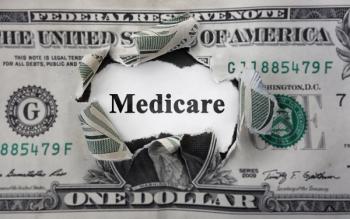
Coding, careful planning can reduce vaccine-associated losses
Practices that scrutinize vaccine costs and plan ahead may not make much off of vaccinations, but could cut some of their losses.
Vaccine administration is an important element of primary care practice, and a critical contribution to preventive care public health.
But as vaccine and overhead costs continue to rise-particularly for private practices-
A
The transition to ICD-10 may have been an administrative burden for practices, but it did offer some relief in aligning vaccination reimbursement with actual costs. Practices still have some work to do, though, to ensure they are making the most of their reimbursement,
Compared to the previous coding system, ICD-10 recognizes the type of vaccine provided by the CPT or HCPCS code entered, negating the need for individual diagnosis codes. Instead, practices report
Code correctly
AAFP offers specific coding guidance for practice billing patients covered by
For face-to-face encounters with counseling, such as when a vaccine is administered in the context of an office visit, practitioners should enter code 90460 and 90461. For vaccines administered in a walk-in or flu clinic, practices can use codes 90471 and 90474.
“There are now administration codes which are meant to cover the cost of the vaccine plus the cost of the overhead to give the vaccine,” Munger said. “But that’s still dependent on several things.
Cost concerns
Paying too much for the vaccine itself can result in huge losses, since reimbursements are based on an average cost. Practices should take steps to compare prices on all vaccines from several manufacturers, and may end up having to order different vaccines from different sources to get the best price, he said.
“You now have to go vaccine by vaccine, line by line, to see where best price is going to be. You may order your entire complement of vaccines from three different manufacturers,” Munger said, cautioning that it’s an ongoing process. “Just like you would hopefully be a savvy shopper if you’re out looking for a large appliance for your home, it’s the same for your practice. Don’t just decide which manufacturer supplied the best price last year. This is an every year process to make sure you’re tracking what the current costs are going to be.”
Ordering vaccines directly from manufacturers can also sometimes come with a discount, but may not be an option for smaller practices, as most manufacturers require a large order to avoid a surcharge.
Practices can also avoid extra administrative costs by making sure that their electronic medical records systems populate the appropriate codes at the time of administration, so that as a vaccine bar code is scanned, the system automatically adds the complementary administration codes.
Even with the best-laid plans, Munger said practices aren’t going to make much on vaccines, but the reward is still worthwhile.
“At the end of the day, the margin on a vaccine is not huge. Most of us in primary care view it in a way that, as long as we don’t lose money and we make a little bit, it’s a service you have to provide,” Munger said. “It’s such an important preventive care and primary health service you’re almost willing to not make as much to make sure it gets done.”
Newsletter
Stay informed and empowered with Medical Economics enewsletter, delivering expert insights, financial strategies, practice management tips and technology trends — tailored for today’s physicians.



















